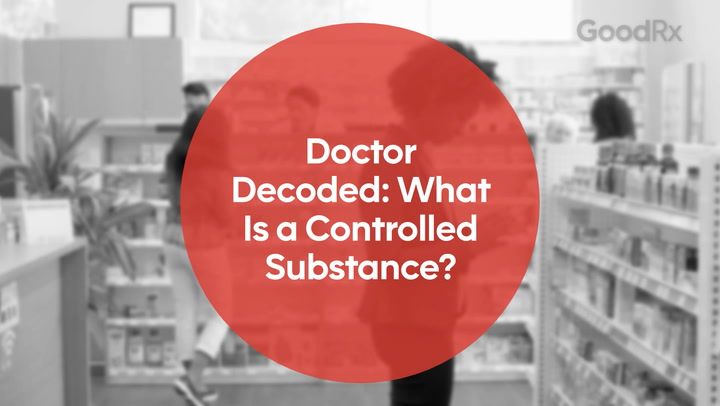
How to Get Suboxone: 6 Tips for Accessing This Medication for Opioid Use Disorder
Key takeaways:
Suboxone (buprenorphine / naloxone) is a buprenorphine medication that treats opioid use disorder. You need a prescription to get Suboxone. And it has restrictions around how it’s prescribed since it’s a controlled substance.
New Suboxone laws have made it easier to get buprenorphine medications, like Suboxone. Some primary care providers can prescribe it.
Suboxone and other buprenorphine-containing medications are available as generics and brand-name medications. Many insurance plans cover Suboxone. But if you don’t have insurance, or your insurance doesn’t cover Suboxone, GoodRx can help make your prescription more affordable.
Table of contents

Suboxone (buprenorphine / naloxone) is a buprenorphine medication that treats opioid use disorder (OUD). Buprenorphine can lessen the intensity of opioid withdrawal symptoms and reduce opioid cravings. And it can save lives by lowering the risk of opioid overdose deaths.
In recent years, Suboxone and other buprenorphine medications have become easier to access. This is a good thing since using medications for OUD (MOUD) is the gold standard approach. Here, pharmacists give you tips for how to get Suboxone.
1. You need a prescription to access Suboxone
Suboxone is a prescription medication, so you can’t access it over the counter. This is because OUD shouldn’t be self-treated. Suboxone is a controlled substance. This means there are specific regulations about prescribing and dispensing it.
A trained healthcare professional (HCP) can prescribe Suboxone and help you find the right dose. They’ll also teach you how to take Suboxone. It’s a sublingual film that you dissolve under the tongue, which is different from an oral tablet or capsule.
2. There are several buprenorphine-containing products to treat OUD
Several buprenorphine medications treat OUD. Some contain buprenorphine and naloxone (like Suboxone), while some contain buprenorphine alone. Besides Suboxone, examples include:
Buprenorphine / naloxone (Zubsolv) sublingual tablets
Buprenorphine-only sublingual tablets
Buprenorphine extended-release injection (Sublocade and Brixadi)
Some buprenorphine products are approved to treat chronic pain but not OUD. This includes a buccal film, called Belbuca, that dissolves under your tongue. A skin patch is called Butrans. These medications are also prescription only. Some buprenorphine-only medications are FDA approved to treat chronic pain, but we won’t cover those in this article.
Good to know: Medications containing buprenorphine and naloxone are first-choice medications for OUD. These include Suboxone and Zubsolv. They’re usually preferred over medications that contain buprenorphine alone. This is because naloxone is thought to keep people from misusing buprenorphine. It’s often considered safer, but some evidence suggests this isn’t necessarily true. Still, buprenorphine / naloxone medications are often used to treat OUD.
3. New Suboxone laws in 2022 make it easier to access
New Suboxone laws in the past several years have made Suboxone easier to access. In 2022, President Joe Biden signed the Mainstreaming Addiction Treatment (MAT) Act (part of the Consolidated Appropriations Act of 2023). This led to several changes in Suboxone prescribing, such as:
The “X-waiver” is no longer required. The MAT act removed the need for an “X-waiver” to prescribe Suboxone for OUD. The X-waiver, issued by the U.S. Drug Enforcement Agency (DEA), was required for HCPs to prescribe buprenorphine-containing medications for OUD. Now, HCPs need only a standard DEA license to prescribe buprenorphine medications. A DEA license is a certification that allows HCPs to prescribe controlled substances.
Prescribing limits have been removed. Previously, HCPs could prescribe Suboxone to only a certain number of people (30 to 275). Now, there’s no limit.
If you think you have OUD, contact your HCP right away. Signs of opioid use disorder may include using opioids in dangerous situations or taking more than what’s prescribed to you. Even if your HCP can prescribe Suboxone, they still might refer you to a substance use disorder specialist. A specialist can help you navigate your treatment options, including therapy and group counseling. The Substance Abuse and Mental Health Services Administration’s treatment locator can help you find treatment programs.
4. Check that your regular pharmacy stocks Suboxone before you run out
Not all pharmacies stock Suboxone regularly. In fact, one study showed that 40% of 5,300 retail pharmacies didn’t have buprenorphine medications in stock.
If you take prescription medications, including Suboxone, it’s a good idea to work with the same pharmacy. Your pharmacist can help make sure you are refilling your prescriptions on time. They can also check for drug interactions and give you advice on how to manage side effects.
And they can let you know if your medication (like Suboxone) is in stock. Call your pharmacy several days before your Suboxone prescription runs out to see if it’s in stock. If it’s not, they should be able to order it for you before your next refill is due, or help you find a pharmacy where it’s in stock.
5. If you’re prescribed Suboxone and you run out, you have some options
Avoiding a break in Suboxone treatment will help reduce your risk of returning to opioid use and experiencing an opioid overdose. But if you forget to refill your Suboxone prescription, call your prescriber immediately. This is likely the best way to renew your Suboxone prescription. Suboxone can be prescribed via telehealth, which may make your prescription easier to obtain.
Additionally, some HCPs in urgent care clinics and emergency rooms may prescribe Suboxone. But this isn’t guaranteed. If you’re experiencing severe opioid withdrawal symptoms, seek immediate care.
6. There are ways to save on Suboxone
Medicare and Medicaid programs will usually cover Suboxone. And if you have commercial insurance, they’re also required to offer some coverage for MOUD (including Suboxone). To learn what’s covered, contact your insurance provider.
If you’re underinsured or you don’t have insurance, there are other ways to save. GoodRx may be able to help you save over 70% off the average retail price of buprenorphine with a free GoodRx discount. You may be able to pay as low as $42.53 for buprenorphine tablets, $33.64 for generic Zubsolv tablets, and $33.64 for generic Suboxone film.
You may also save with a copay savings card or a patient assistance program from certain brand-name manufacturers. For example, you may be able to pay as little as:
$5 per month for Suboxone if you have commercial insurance or no insurance
$10 per prescription for Zubsolv if you have commercial insurance or no insurance
The bottom line
Suboxone (buprenorphine / naloxone) is one of many buprenorphine medications that treat opioid use disorder. You need a prescription to get Suboxone. It’s a controlled substance, so prescribing and filling Suboxone is highly regulated. But new Suboxone laws have made it easier to get Suboxone and other buprenorphine medications. This is a good thing since Suboxone can save lives.
Your primary care provider may be able to prescribe Suboxone if they think it’s a good option. They may also refer you to a substance use disorder specialist for further care. You can usually get Suboxone and other buprenorphine medications at the pharmacy, but it’s a good idea to call first.
Why trust our experts?


References
American Society of Addiction Medicine. (2020). The ASAM national practice guideline for the treatment of opioid use disorder: 2020 focused update.
Bicycle Health. (2023). Over 40% of U.S. pharmacies report no buprenorphine in stock, according to new peer-reviewed study from bicycle health published in JAMA Network Open. GlobeNewswire.
Blazes, C. K., et al. (2020). Reconsidering the usefulness of adding naloxone to buprenorphine. Frontiers in Psychiatry.
Landi, H. (2023). DEA extends pandemic rules for telehealth prescribing through 2024 as agency irons out new policies. Fierce Healthcare.
Larochelle, M. R. (2018). Medication for opioid use disorder after nonfatal opioid overdose and association with mortality: A cohort study. Annals of Internal Medicine.
Medicare.gov. (n.d.). Opioid use disorder treatment services.
National Association of State Alcohol and Drug Abuse Directors. (n.d.). Buprenorphine patient limits: History and overview.
Silwal, A., et al. (2023). State alignment with federal regulations in 2022 to relax buprenorphine 30-patient waiver requirements. Drug and Alcohol Dependence Reports.
Substance Abuse and Mental Health Services Administration. (2018). Medicaid coverage of medication-assisted treatment for alcohol and opioid use disorders and of medication for the reversal of opioid overdose.
Substance Abuse and Mental Health Services Administration. (2024). Waiver elimination (MAT Act).
U.S. Department of Health and Human Services. (2022). Does insurance cover treatment for opioid addiction?
Was this page helpful?
Related Articles
Browse medications
View AllResearch prescriptions and over-the-counter medications from A to Z, compare drug prices, and start saving.















